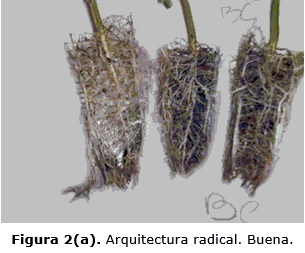Biochareffect in the physical properties of different organic growing media
Main Article Content
Abstract
Downloads
Article Details
References
Alarcón, A. 2004. Introducción a los cultivos sin suelo. In Curso de fertirriego: Manejo en suelos y sustratos agrícolas. San José, Costa Rica. 23 p.
American Society for Testing and Materials (ASTM). 1972. Guidelines for establishing sieve analysis procedures. 50 p.
Ansorena, M. J. 1994. Sustratos, propiedades y caracterización. Ediciones Mundi-Prensa. España. 172 p.
Caballero, J.A.; Front, R.; Marcilla, A. y Conesa, J.A. 1997. Characterization of sewage sludges by primary and secondary pyrolysis. Journal of Analytical and Applied Pyrolysis. 40(41): 433-450.
Castillo, M. I; Medina, M. R.; González, I. E.; Cobas, L.M. y Bonilla, M.2006. Evaluación de diferentes sustratos compuestos por cachaza como elemento. Revista Forestal Baracoa. 25 (2): 75-85.
Cabrera, R. 1999. Propiedades, uso y manejo de sustratos de cultivo para la producción de plantas en maceta. Revista Chapingo Serie Hortícola. 5(1):5-11.
Koch, J. y Kaminsky, W. 1993. Pyrolysis of a refinerysewagesludge. Erdöl, Kohle, Erdgas, Petrochemie. 46: 323.
Noguera, P.; Abad M. R.; Maquieira, P. A. y Noguera, V. 2003. Influence of particle size on physical and chemical properties of coconut coir dust as a container medium. Communications in Soil Science and Plant Analysis. 34:593-60.
Yamato, M.; Okimori, Y.; Wibowo, I.F.; Ashori, S. y Ogawa, M. 2006. Effects of the application of charred bark of Acacia mangium on the yield of maize, cowpea and peanut, and soil chemical properties in South Sumatra, Indonesia. Soil Science and Plant Nutrition.52:489–495.
Kämpf, A.N. y Jung, M. 1991. The use of carbonized rice hulles as an horticultural substrate. Acta Horticulturae. 294: 271-283.
Raviv, M.; Lieth, J.H.; Bar-Tal, A. y Silber, A. 2008. Growingplants in soilless culture operational conclusions. Pp.545-567. In: Soilless culture: Theory and practice. Raviv, M and JH Leith (ed) Elsevier. 587 p.
Guzmán, J. M. 2003. Sustratos y tecnología de almácigo. In: Memoria de cursos de producción en ambientes protegidos. UCR-CYTED. San. José, Costa Rica.
Cobas, L., M.; Castillo, I. y González, I., E. 2001. Comportamiento de diferentes parámetros morfológicos en la calidad de la planta de HibiscuselatusSw., cultivada en viveros sobre tubetesen la provincia de Pinar del Río. Revista Avances 3(1): 17-21.


